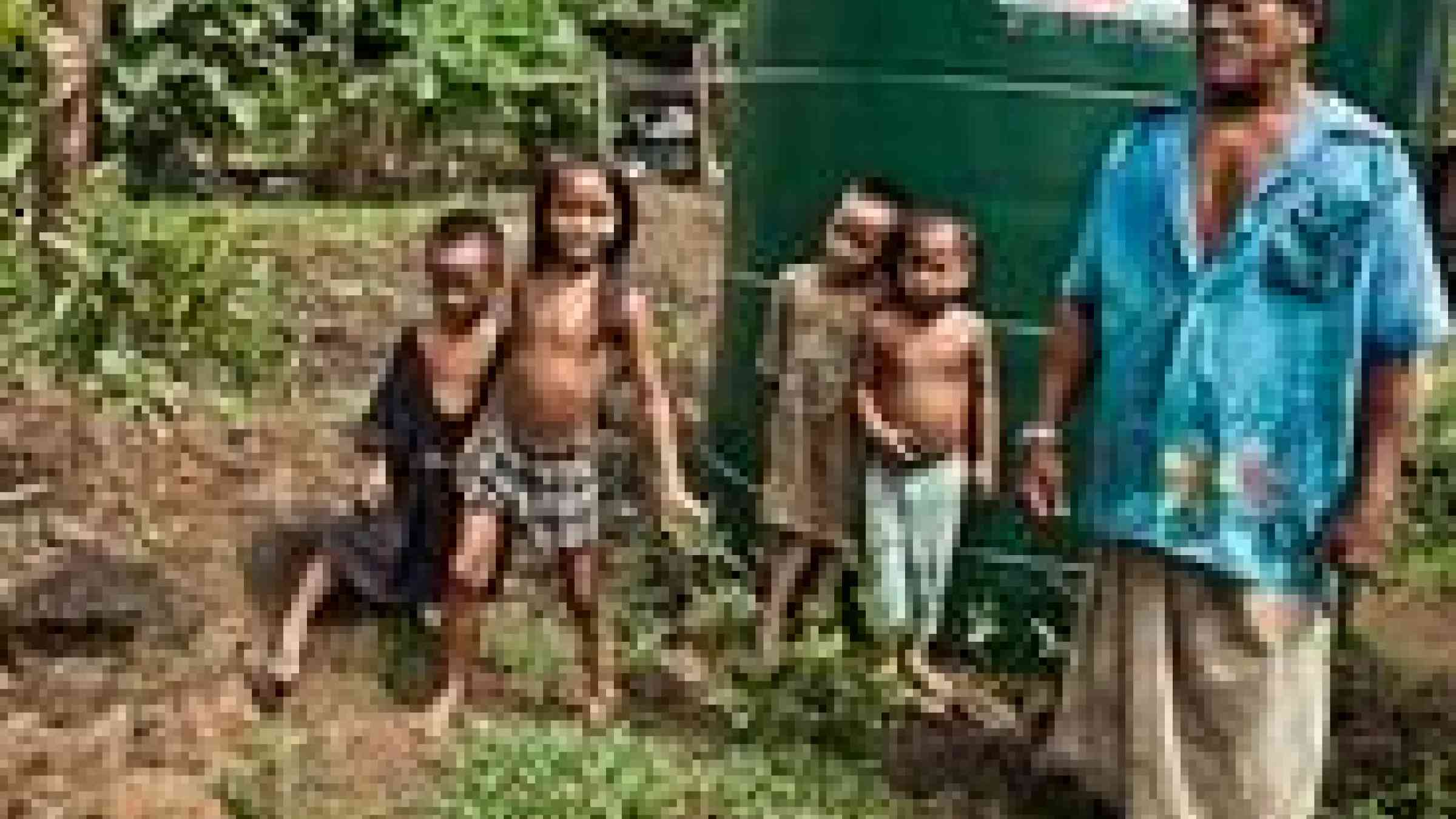Helping communities adapt to climate change in Samoa

By Patrick Fuller, IFRC
Just 20 minutes’ drive into the hills from the Samoan capital lies the village of Falemauga, home to 67 year-old Ale Tuiletufuga who runs a small farm with his family. The area is lush and fertile, abundant with banana and other fruit plantations. But look beneath the beauty of the setting and a different picture emerges. In 1991, Ale was left with nothing when the two tea-houses he owned were blown down together with his entire banana plantation after Cyclone Val tore across the island. Samoa has becoming increasingly prone to severe tropical cyclones. A year earlier the country was hit by Cyclone Ofa and the damage caused by the two storms was estimated at three times the country’s gross national product.
As a farmer, Ale is acutely aware of Samoa’s changing weather patterns. “We now see more cyclones closer together; the heat has increased and we have less rainfall. With long droughts we aren’t able to harvest enough crops,” he says.
Another problem for his community is the lack of access to water as the area falls outside the government’s water supply network. Until a few months ago, Ale relied on empty refrigerators, buckets and oil drums to collect rainwater from his rusting tin roof. But his children often fell sick with diarrhoea and skin diseases.
Now the family’s situation has improved dramatically thanks to a water and sanitation programme supported by the Samoa Red Cross Society which is providing rainwater harvesting kits and pit latrines to 1,200 families across the Island. As well as installing a 200 litre PVC tank and with guttering, the Red Cross provides training to each household so they know how to maintain and clean the tanks. Education on good hygiene and hand-washing completes the approach towards safeguarding family health and improving living standards.
Climate modellers predict that the effects of global warming – coupled with natural weather events caused by El Niño and La Niña – have caused an escalating pattern of greater extremes in rainfall distribution across the Pacific, together with more intense and frequent cyclonic storms and prolonged periods of drought. Approximately 70 per cent of Samoa’s population and infrastructure is located in low-lying coastal areas, making the population increasingly vulnerable to the projected rises in sea levels.
“In the past decade we had about three major disasters – this is something new,” says Tautala Mauala, Secretary General of the Samoa Red Cross Society. “Flooding caused by Cyclone Evan in 2012 brought Apia to a standstill and also affected the southern part of the mainland. It’s not just the frequency, but the severity of these disasters. They are having a devastating impact on our country.”
Helping communities adapt to the risks posed by climate change is integral to the disaster risk reduction activities of the Samoa Red Cross Society. Under a Community Disaster and Climate Risk Management Programme funded by the Australian Red Cross, support is being provided to communities to become more resilient in the face of disaster threats. The project’s origins are partly rooted in the experience of Cyclone Evan, which highlighted a lack of knowledge among communities on how to prepare for and respond to disasters.
Olivia Fidow is a member of one project committee from Utualli. In a project management seminar organised by the Red Cross she is being coached on how to develop projects that support her community of 500. The Red Cross works with dedicated ‘response teams’ that comprise the project committees. Each team has a specific focus such as project management, early warning, security and first aid.
“Our village was hit hard by Cyclone Evan,” says Olivia. “Many of the families staying on the waterfront are now moving inland because their homes were damaged. After the cyclone they lost their water supply and there were food shortages. We help our community to recognise and build upon the skills and resources that we have. We teach them in ways that they understand so that we can look after each family member when the next disaster strikes.”
Disaster risk reduction also encompasses food security. Leaso Usoalii is the team leader of the society’s vegetable gardens project which selects low income households and teaches them how to prepare vegetable beds. Every few weeks his team visits each household to review their progress. The aim is to help vulnerable families supplement their diets and boost their incomes by selling surplus produce at local markets.
“People traditionally couldn’t afford the seeds and fertiliser, and they had no knowledge of growing vegetables like cabbages, cucumbers and tomatoes. Now families are able to save money for their childrens’ school things and household bills.”
According to Tautala Mauala, adapting to climate change means helping communities reduce a range of risks that affect their lives. “Access to clean water and good sanitation practises, support to livelihoods and building community structures and knowledge – these are all integral to helping communities achieve a greater degree of resilience and self-reliance.” -